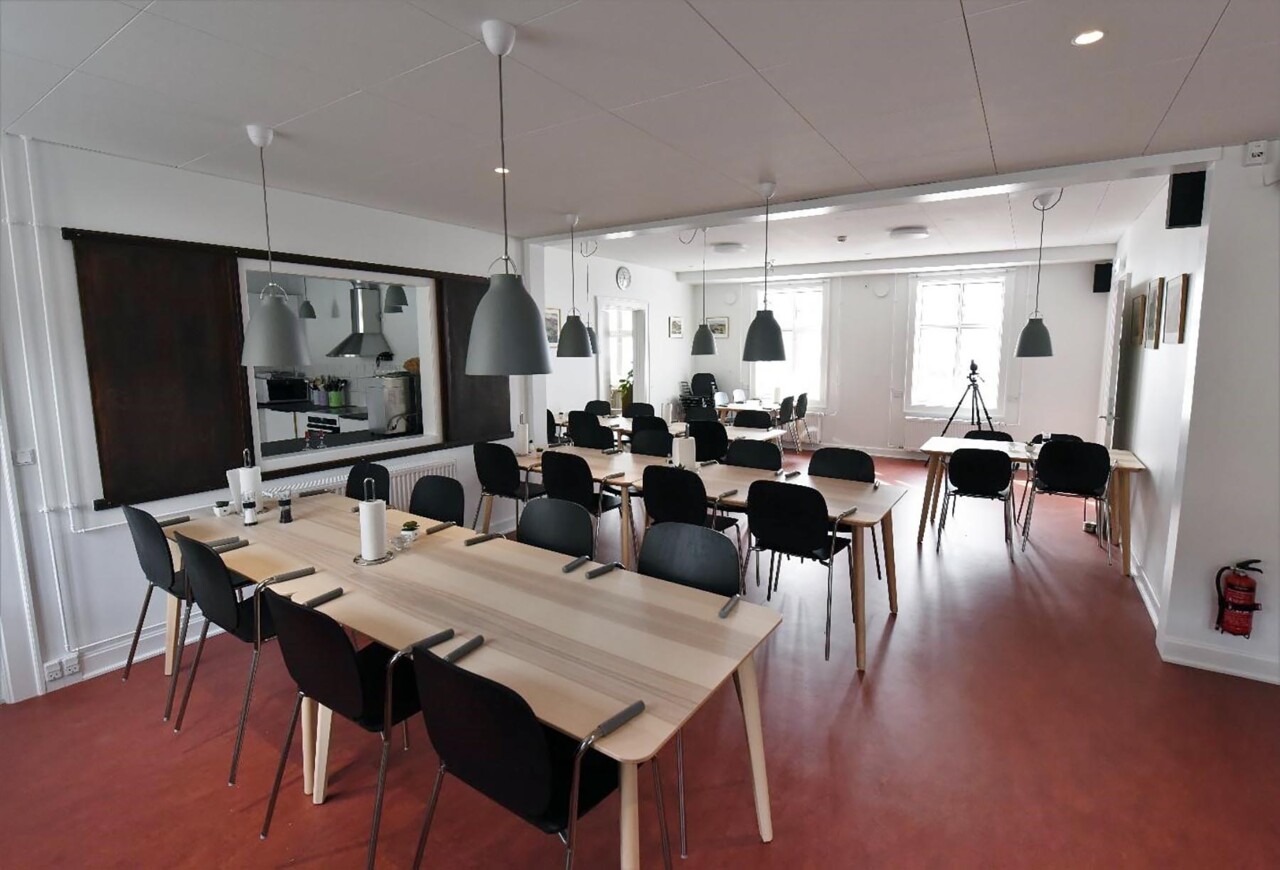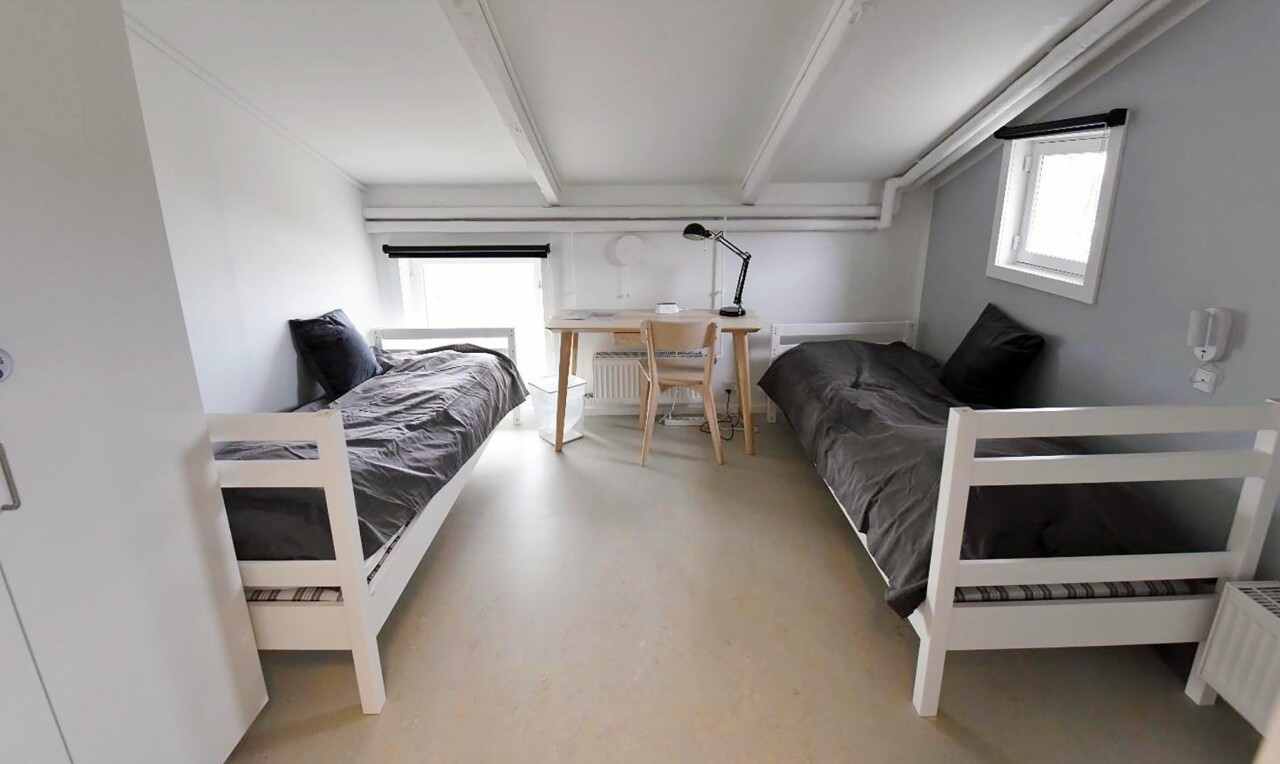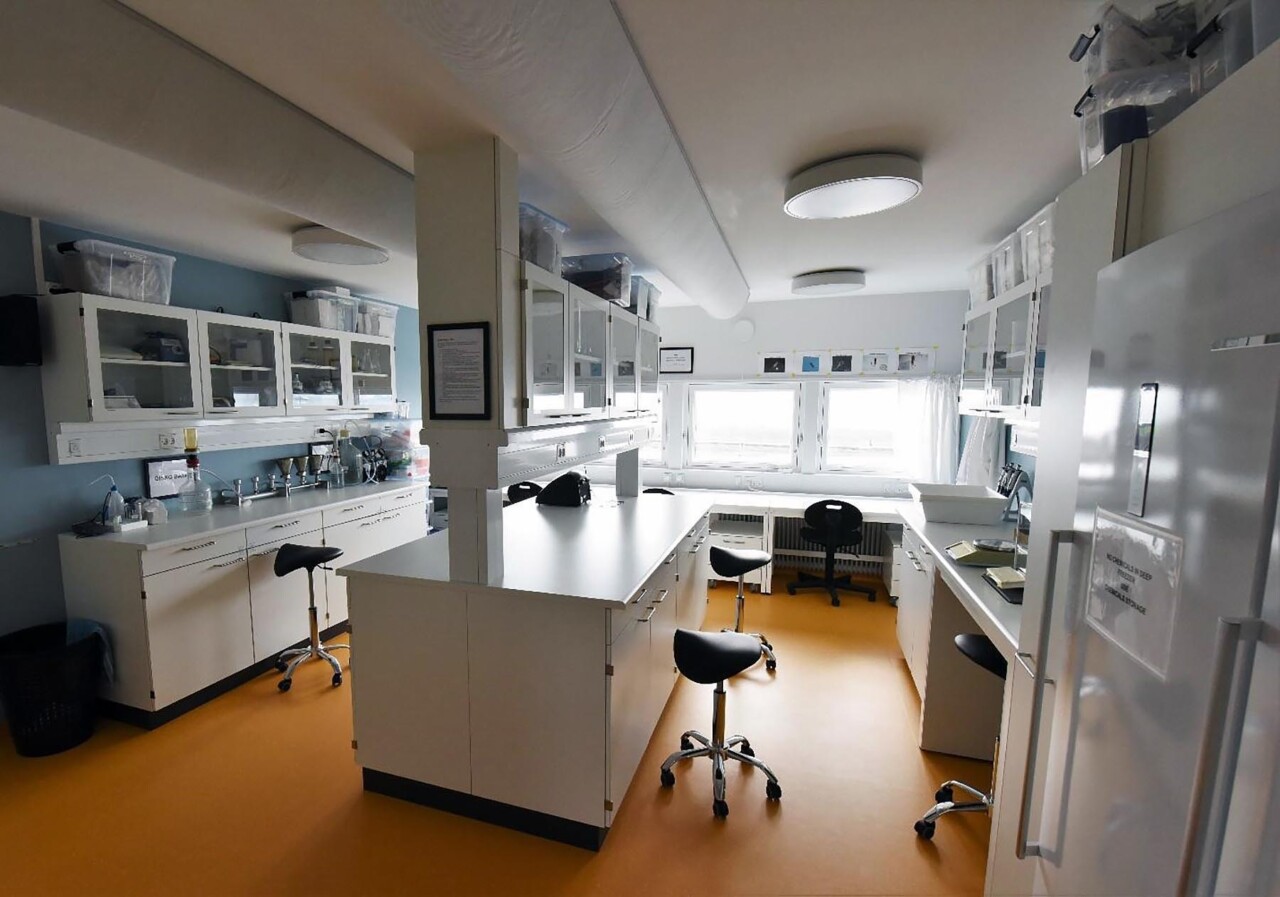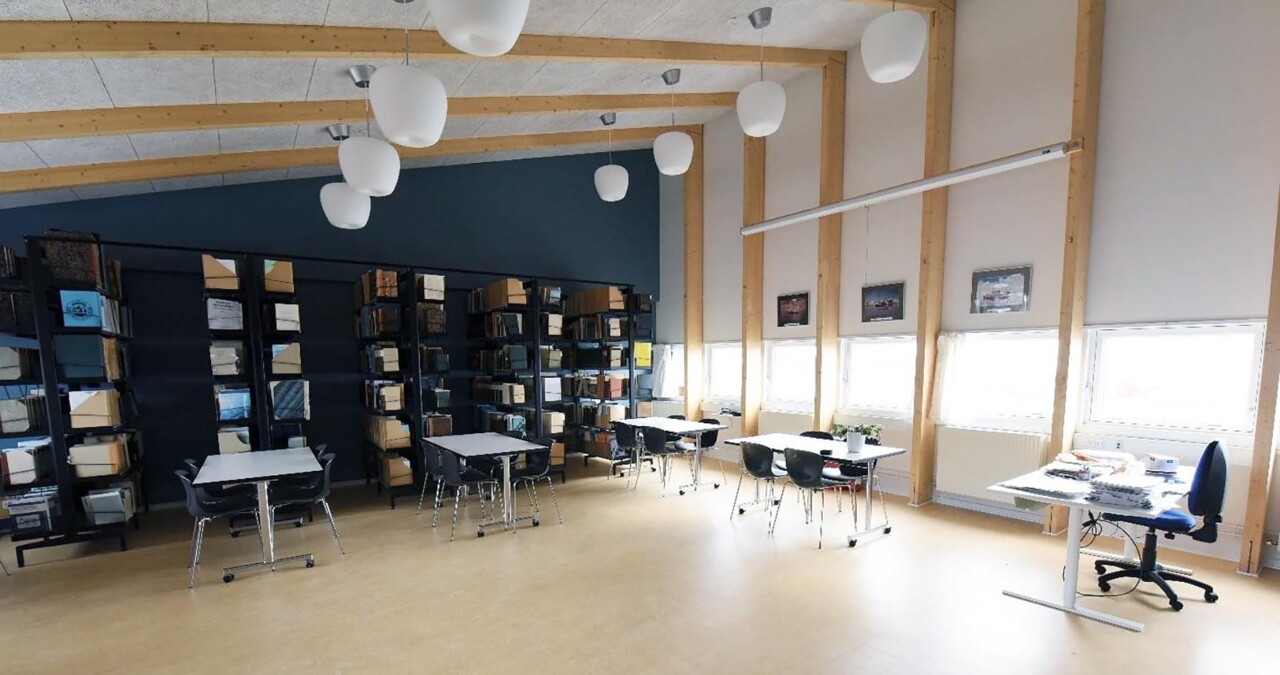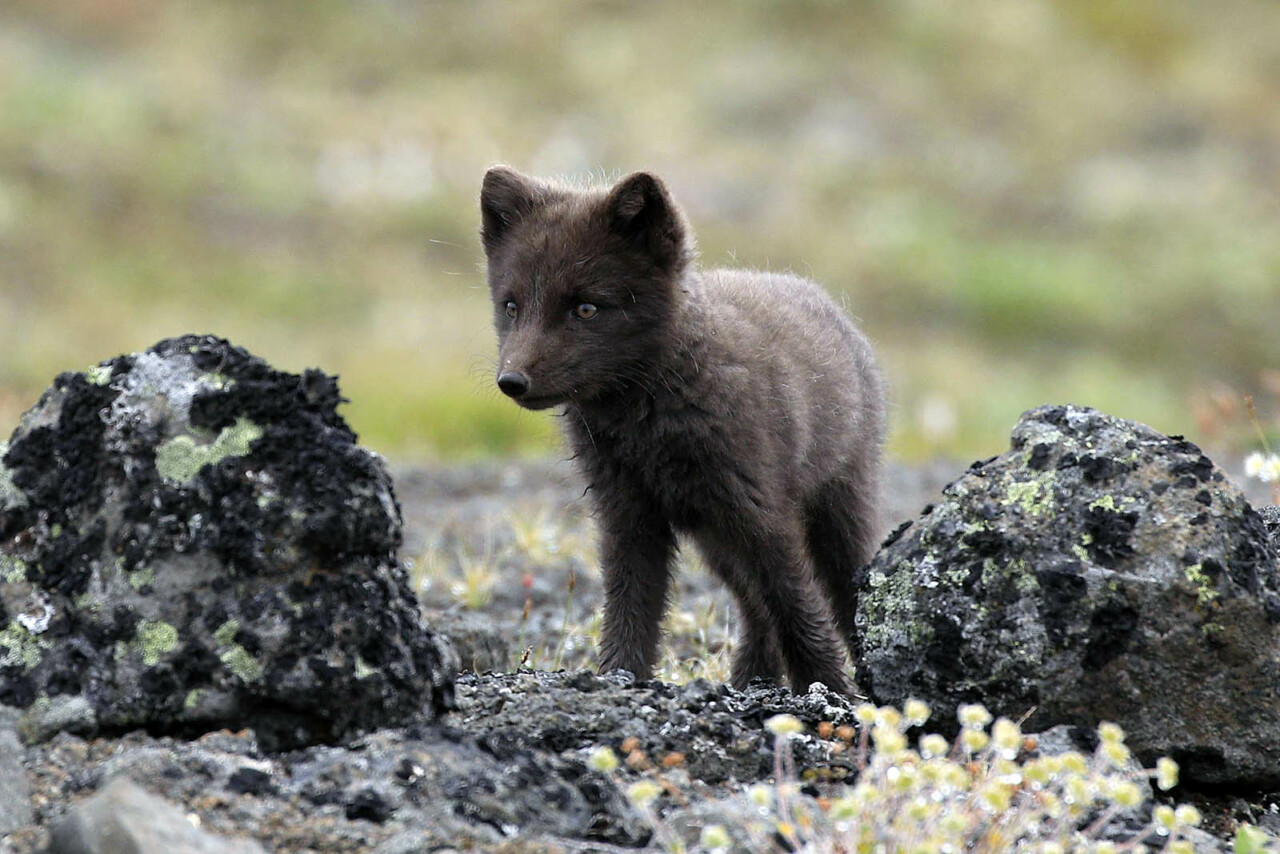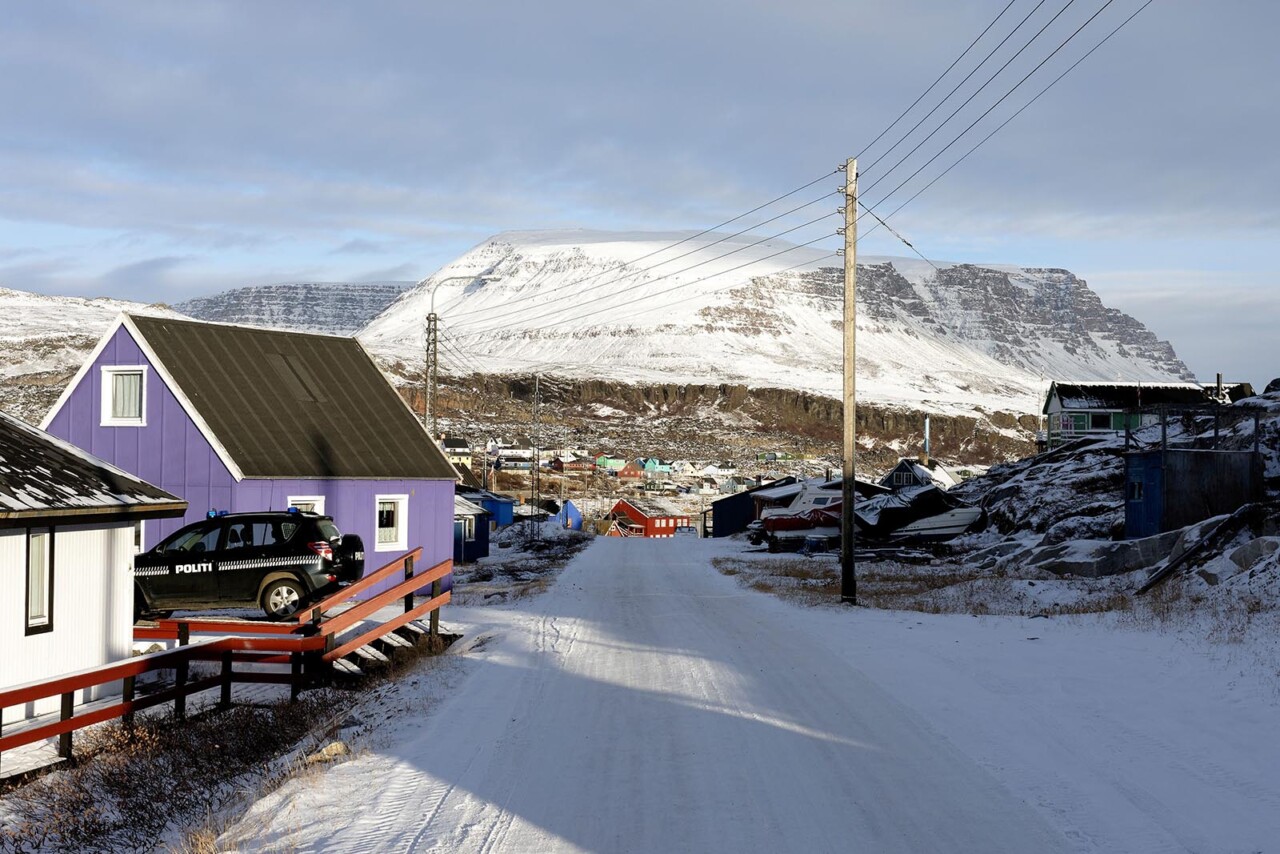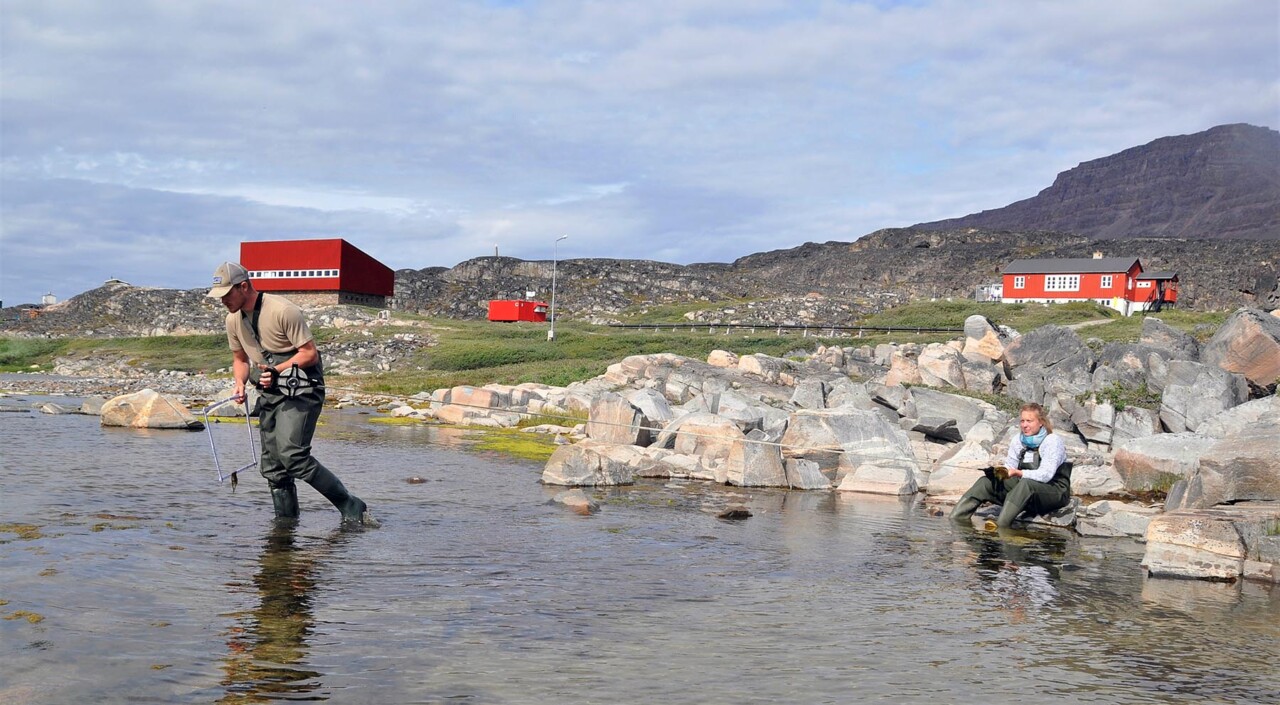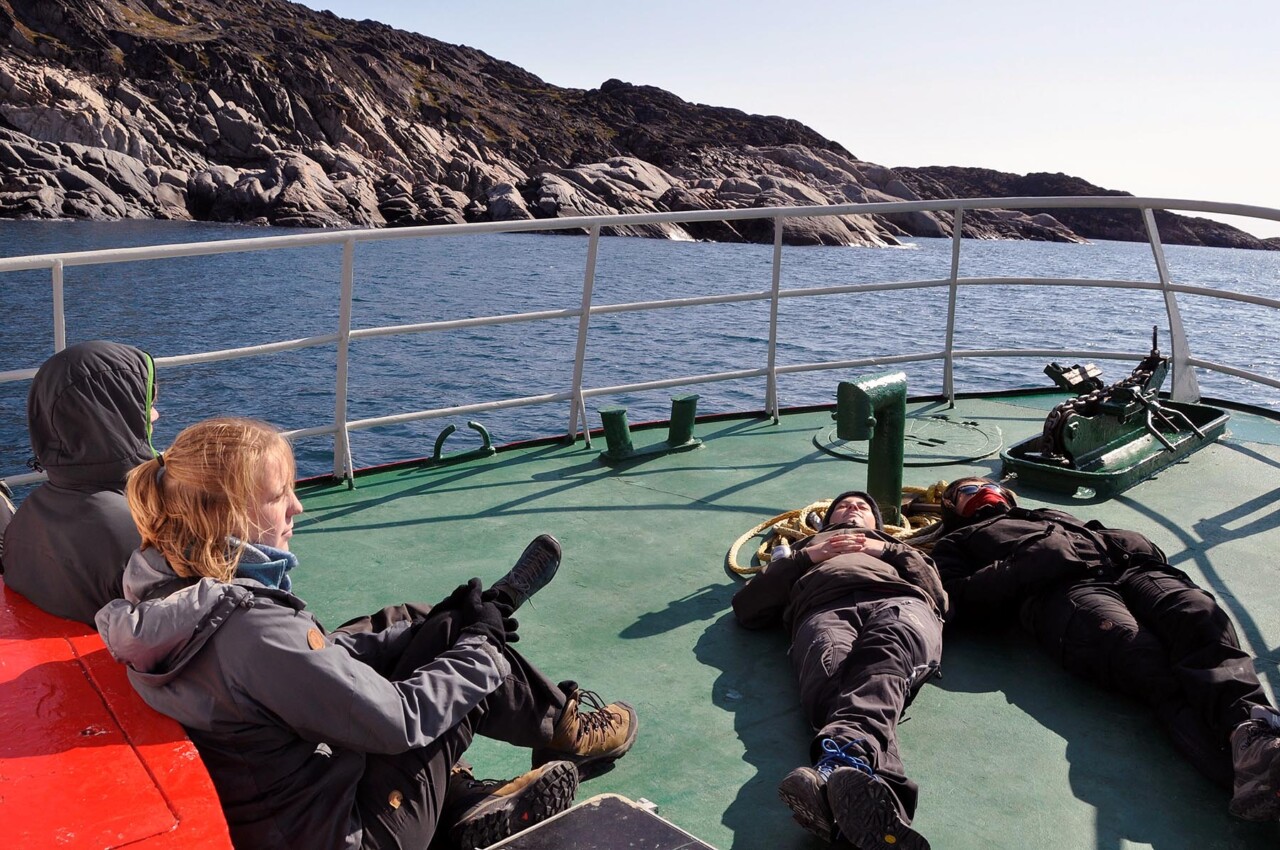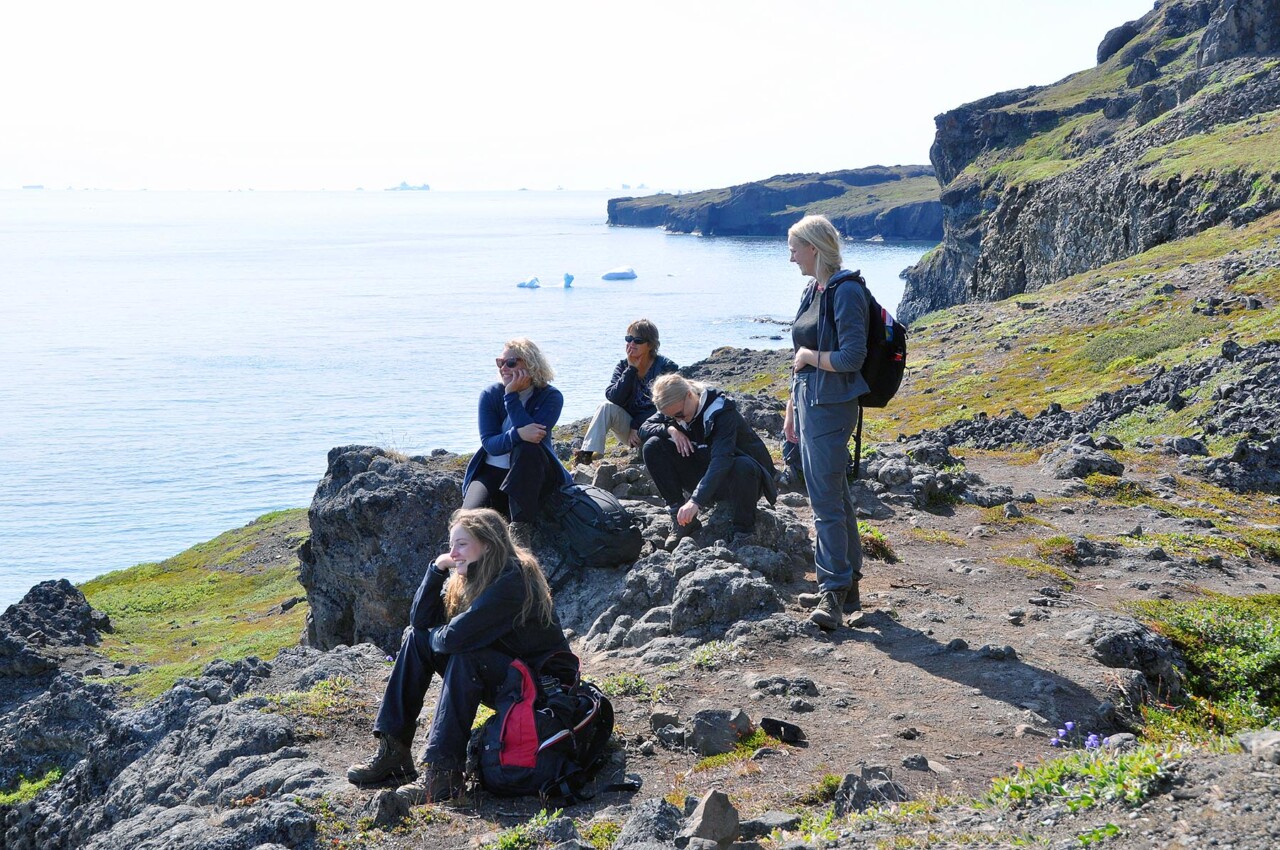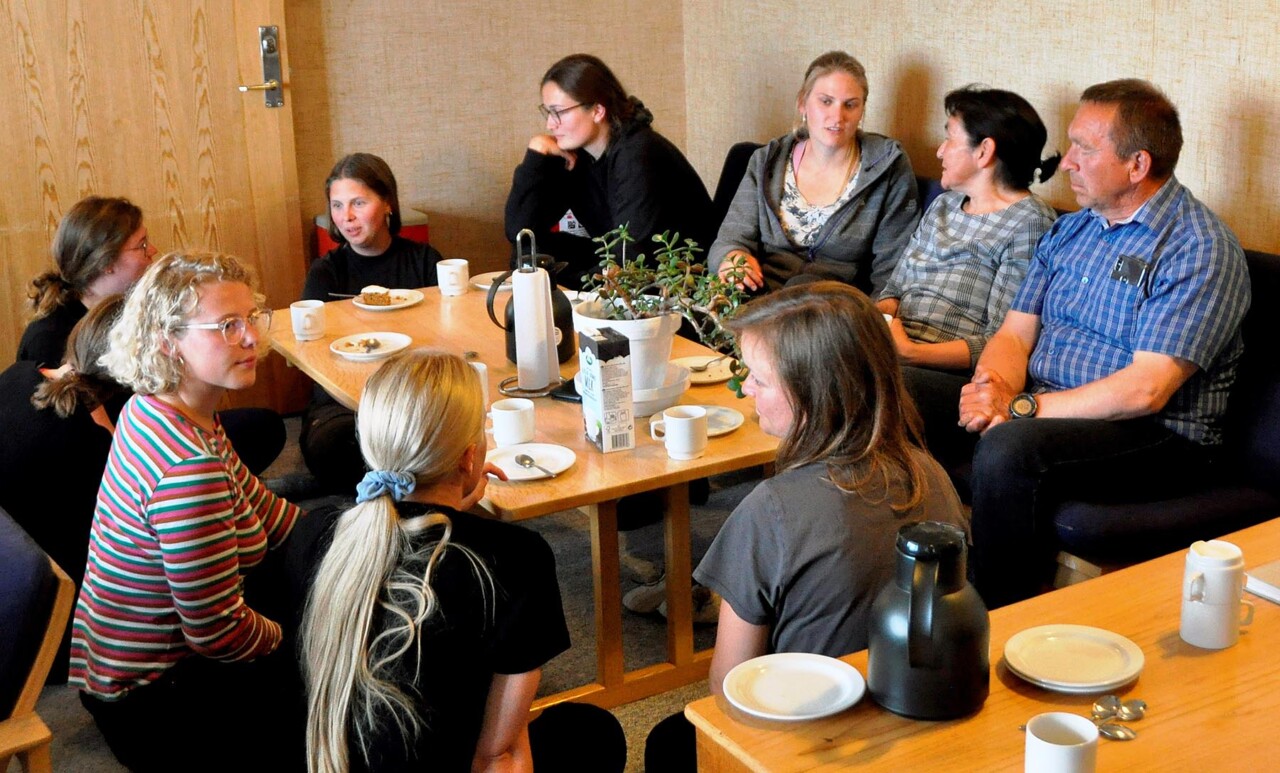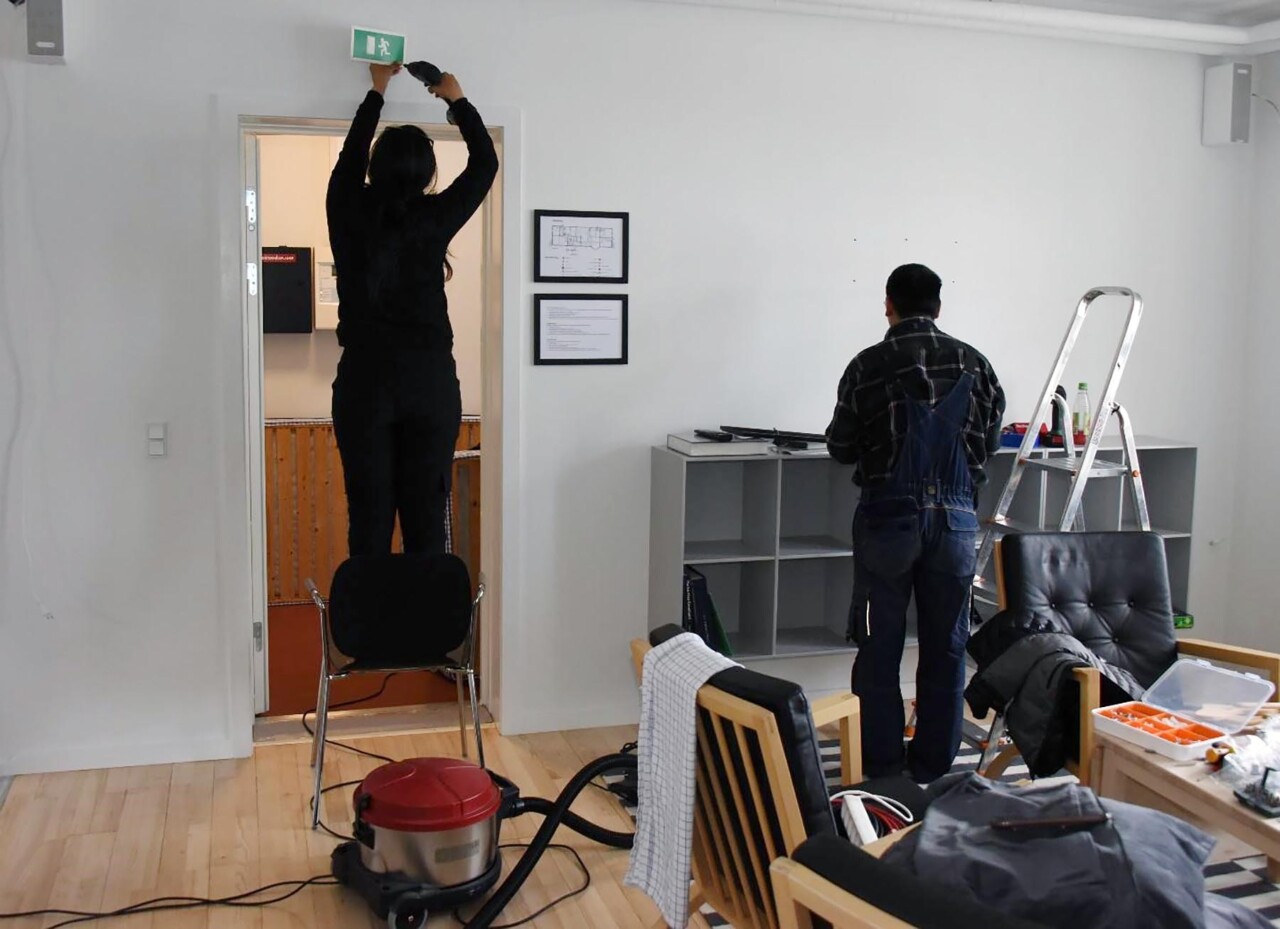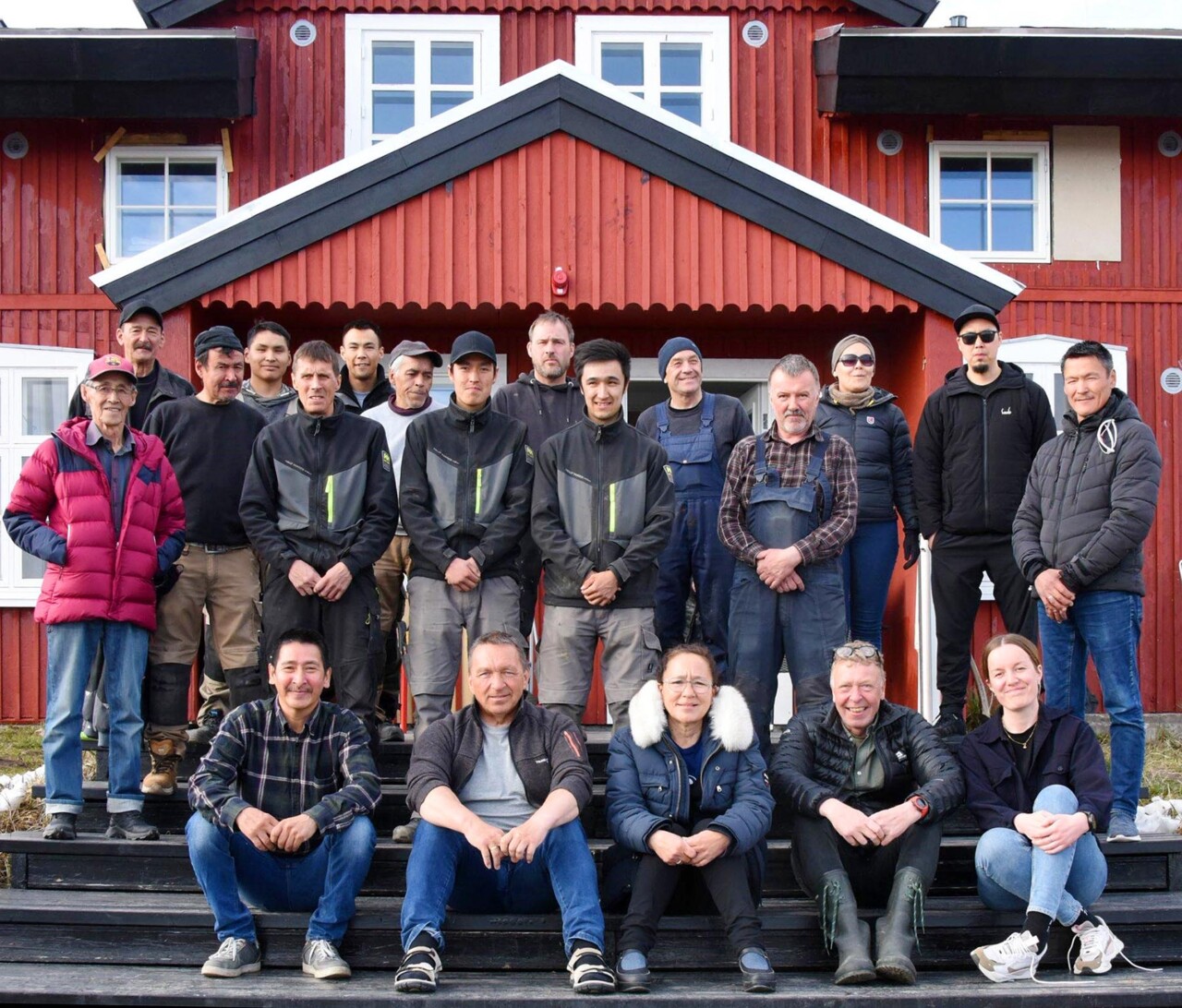Universitetsavisen
Nørregade 10
1165 København K
Tlf: 35 32 28 98 (mon-thurs)
E-mail: uni-avis@adm.ku.dk
—
Science
Field station — The Arctic Station is teeming with scientists from throughout the world. A renovation project will now offer space to 50 per cent more.
The Arctic Station on the island of Disko in West Greenland is the northernmost office of the University of Copenhagen, and visiting it can be quite an adventure.
When you look up from your research in the laboratory, you can be fortunate to see humpback whales swimming past on the horizon.
But just as picture perfect the surroundings are on the outside, just as rundown the indoor surroundings are, after 116 years of continued use. A thorough renovation had been on the users’ wish list for years, and it was finally completed in the summer of 2022.
Before that, the station layout was, to say the least, outdated. There was brown hessian on the walls, old furniture, and sleeping berths separated from a central aisle by swing doors like in a Western saloon. You could peer over the doors into the rooms which had space for two small berths. There was no privacy.
But that has all changed now.
»There have been huge improvements at the Arctic Station, and the station is now a modern field station,« says Professor Per Juel Hansen, who has used the Arctic Station and its adjoining laboratory facilities many times in connection with his research into the Arctic region.
Per Juel Hansen, works in the marine biology section of the Department of Biology at the University of Copenhagen and is the manager of the Arctic Station. He says that it had become urgent to renovate the place due to the increased interest in Arctic conditions from researchers from throughout the world.
This is primarily due to the fact that global climate changes have become so much more apparent over the past 20 years, and because the Arctic is being affected to a higher degree than the rest of the world. For this reason, the researchers’ interest in living and working at the station has grown significantly. They want to monitor developments and do research on it.
Kirsten Seestern Christoffersen is a member of the the board for the Arctic Station, a professor of freshwater biology at the Faculty of Science and an Arctic researcher.
She has used the station for decades as the starting point for her research and for teaching students at the University of Copenhagen. She points to several things that used to be problematic. The kitchen, the laboratory, the Arctic Station had limitations in terms of bed capacity, and one thing in particular has been the focus of many of the users:
»A lot of visitors were not particularly happy about having to defecate in a bag every time they needed to go to the toilet. So the new flush lavatories have received a lot of praise,« says Kirsten Seestern Christoffersen.
According to Kirsten Seestern Christoffersen, one of the really good things about the renovation is that the number of bed spaces has increased from 26 to 39. This will allow more researchers to work from the Arctic Station, all year round.
Arctic Station
The Arctic Station was set up by the botanist Morten P. Porsild in 1906, but has been administered by the University of Copenhagen since 1953, with a board of natural scientists made responsible for the operation of it.
The Faculty of Science’s faculty secretariat runs the site as a research station for the promotion of Arctic research and education in biological and geo-related topics.
Arctic Station had, in 2019, 1,850 overnight stays by a total of 176 people.
Professors and associate professors typically stay 10-14 days at the station, while PhD students can spend a longer period of time there.
The renovation work was finally completed on 1 July 2022.
It is not just the climate, but the research topic itself that is hotting up. Scientists have begun to understand that a lot goes on in the Arctic during the winter. Scientists previously assumed that the Arctic was so frozen in the winter months that there were no growth processes under the ice. This has turned out to be completely wrong.
»This is why there has been so much more interest in working at the station in both summer and winter. This has at the same time been a strong argument to get DKK 12 million from the University of Copenhagen to both expand and renovate the station,« says Kirsten Seestern Christoffersen.
There are visiting scientists from the University of Copenhagen and other Danish universities, from Scandinavia, Europe and even from Asia as well as from Canada and the US.
»In the future, it will probably be the case that we need our colleagues and students to man the Arctic Station from January to December instead of only during the summer months,« she says. The level of activity will increase.
Associate Professor Niels Daugbjerg at the Marine Biology Section, Department of Biology. He has also visited Arctic Station regularly since 2002, and praises the improved conditions for the students.
Niels Daugbjerg had 12 of his students on the Arctic Station on Disko Island in the summer of 2022, and they all felt the benefits after the big upgrade:
»We were only reminded that we do not work in the laboratory in Copenhagen when we once in a while looked out of the window and saw the beautiful Disko Bay with the icebergs,« says Niels Daugbjerg.
According to Kirsten Seestern Christoffersen, the poor conditions for students was also why a thorough renovation was needed.
»It is very important to us that the teaching at the Arctic Station would be optimal, so we can do courses for both bachelor’s and master’s degree students. We can see that universities from other countries would like to do courses for their students here, and in this way we can educate the next generation of scientists,« she says.
It is only in the Arctic that students can learn to do fieldwork under realistic conditions:
»The young researchers need to learn how to do research in the Arctic to see how things work in practice, including all the challenges. I’m going to be up there this summer with 14 of my students. Even though they’re all full of enthusiasm right now — and many of them will definitely love it and dream of a career as an Arctic scientist — there will probably also be some of them who find that this career path is too uncertain. Or they might find the climate too harsh for them,« says Kirsten Seestern Christoffersen.
And then there is one final advantage of the renovation, which Kirsten Seestern Christoffersen wants to point out:
»We would very much like to be in contact with the local population in Greenland. We want a dialogue to ensure that the things we do contribute to Greenlandic society and their own research institutions. We hope in addition that we can invite Greenlandic students to join our courses and in this way establish a collaboration with them,« she says.
Arctic Station is already part of several different monitoring projects which Denmark and Greenland work on together to investigate climate change.
